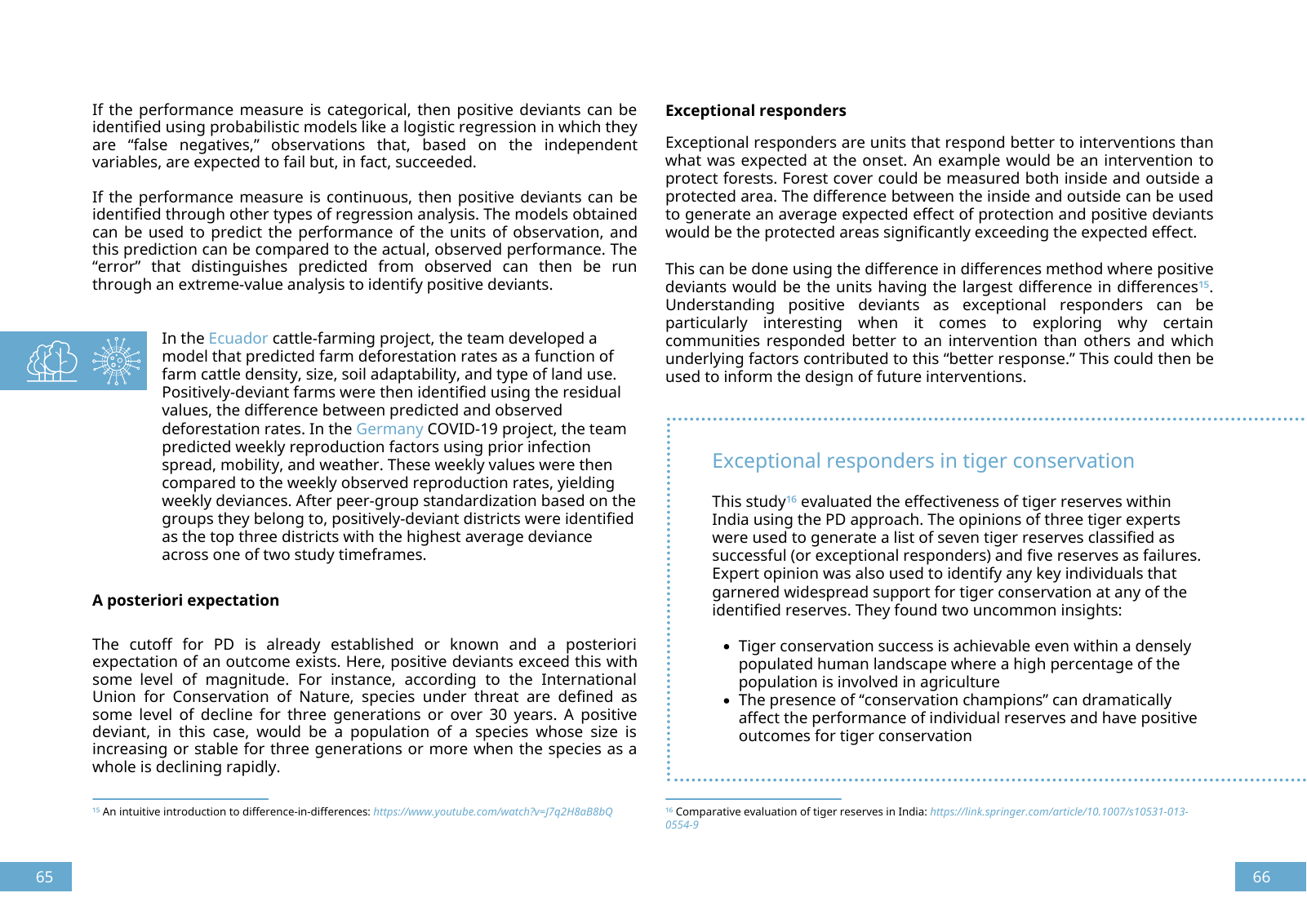Tiger conservation success is achievable even within a densely populated human landscape where a high percentage of the population is involved in agriculture The presence of conservation champions can dramatically affect the performance of individual reserves and have positive outcomes for tiger conservation This study evaluated the effectiveness of tiger reserves within India using the PD approach The opinions of three tiger experts were used to generate a list of seven tiger reserves classified as successful or exceptional responders and five reserves as failures Expert opinion was also used to identify any key individuals that garnered widespread support for tiger conservation at any of the identified reserves They found two uncommon insights The cutoff for PD is already established or known and a posteriori expectation of an outcome exists Here positive deviants exceed this with some level of magnitude For instance according to the International Union for Conservation of Nature species under threat are defined as some level of decline for three generations or over 30 years A positive deviant in this case would be a population of a species whose size is increasing or stable for three generations or more when the species as a whole is declining rapidly If the performance measure is categorical then positive deviants can be identified using probabilistic models like a logistic regression in which they are false negatives observations that based on the independent variables are expected to fail but in fact succeeded If the performance measure is continuous then positive deviants can be identified through other types of regression analysis The models obtained can be used to predict the performance of the units of observation and this prediction can be compared to the actual observed performance The error that distinguishes predicted from observed can then be run through an extreme value analysis to identify positive deviants In the Ecuador cattle farming project the team developed a model that predicted farm deforestation rates as a function of farm cattle density size soil adaptability and type of land use Positively deviant farms were then identified using the residual values the difference between predicted and observed deforestation rates In the Germany COVID 19 project the team predicted weekly reproduction factors using prior infection spread mobility and weather These weekly values were then compared to the weekly observed reproduction rates yielding weekly deviances After peer group standardization based on the groups they belong to positively deviant districts were identified as the top three districts with the highest average deviance across one of two study timeframes A posteriori expectation Exceptional responders are units that respond better to interventions than what was expected at the onset An example would be an intervention to protect forests Forest cover could be measured both inside and outside a protected area The difference between the inside and outside can be used to generate an average expected effect of protection and positive deviants would be the protected areas significantly exceeding the expected effect This can be done using the difference in differences method where positive deviants would be the units having the largest difference in differences Understanding positive deviants as exceptional responders can be particularly interesting when it comes to exploring why certain communities responded better to an intervention than others and which underlying factors contributed to this better response This could then be used to inform the design of future interventions Exceptional responders Exceptional responders in tiger conservation An intuitive introduction to difference in differences https www youtube com watch v J7q2H8aB8bQ Comparative evaluation of tiger reserves in India https link springer com article 10 1007 s10531 013 0554 9 65 66

Hinweis: Dies ist eine maschinenlesbare No-Flash Ansicht.
Klicken Sie hier um zur Online-Version zu gelangen.
Klicken Sie hier um zur Online-Version zu gelangen.